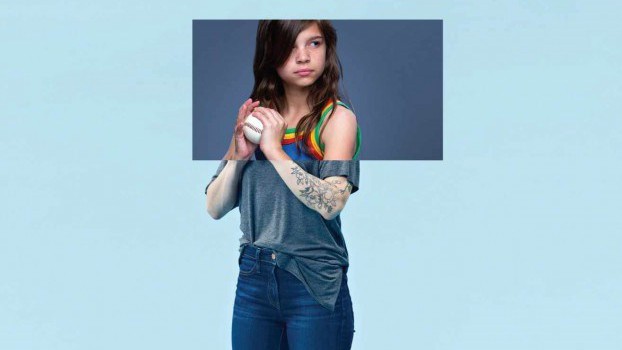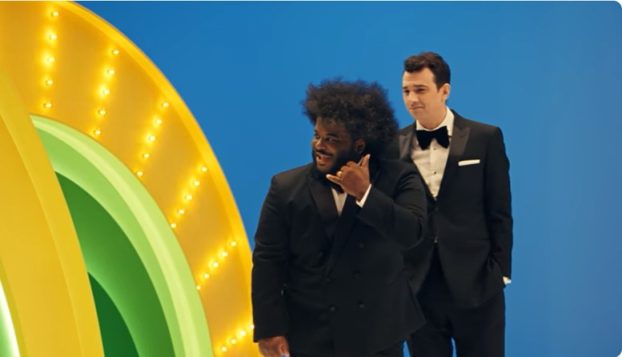BBDO Canada’s stance in the ring is decidedly head-down, eyes-on-the-prize. Unlike the Cassius Clays of the ad world, the Toronto-based agency doesn’t trumpet its awards or new business wins, preferring to quietly keep clients happy with good, solid work.
But as the agency reappears on the AOY podium for its best showing in 10 years, it might be harder to keep a low profile. ‘Keep your eye on BBDO, that’s what I tell my staff,’ says one, decidedly louder agency president. ‘They’re an agency I have to pay attention to.’
President Dom Caruso attributes BBDO’s breakthrough work on brands like Diet 7-Up to the network-wide ‘Total Work’ approach. ‘There was a time a few years ago when BBDO [Toronto] was ‘an ad agency that makes great TV spots,” he says. ‘Today, everything [we do] in terms of how we work towards strategies and develop campaign ideas is to get to a big magic idea that’s bigger than any single medium, that inspires great creativity across every touchpoint.’
Total Work, which has been in effect for three years, was first implemented in Toronto by former chairman and CCO Jack Neary, who left in January to work on the P&G business in New York. And ECD Ian MacKellar insists that very little has changed since his mentor’s departure. ‘That was the great thing about Jack’s legacy – his skill set is enviable and it’s hard to follow in his footsteps, but he left me with the tools to carry the torch for the agency,’ he says.
The work has built trust with clients like Royal Bank and Johnson & Johnson (Monistat) to do more risqué work. ‘We’re taking intelligent risks to make sure people are getting more engaged,’ says Caruso. ‘In this day and age, for communications to really work, they can’t be too conservative. It’s that spirit at the client level that has been key to the progress we’ve made in the past year.’
Being in a top-shelf network is also a big motivator. ‘We’re in a pretty tough and enviable crowd,’ says MacKellar. ‘We have no choice but to try to rise to the occasion.’
VITAL STATS
Home gym: Toronto, Vancouver, Winnipeg, Calgary, Montreal, Windsor, Halifax
Entourage: 300 deep
Season highlights: New business includes Sirius Satellite Radio, Mabe General Electric, Mercedes Benz and the Ontario Ministry of Health. Diet 7-Up work scored a Silver Lion at Cannes
Defeats: Lost the Budweiser Quebec account to Brad Marketing in March. The auto industry slowdown means less Chrysler work;
fast-feeder Cara Operations is also feeling the pinch
Management moves: Chairman and CCO Jack Neary moved to BBDO New York, while Ian MacKellar rose to fill his creative role as ECD; SVP/EMD Stephanie Nerlich left to become president at Lowe Roche
Training regimen: The work, the work, the work
Licensing and merchandising: A card-carrying member of the BBDO network, which has been named Cannes Network of the Year for two years running
PARMALAT CANADA
Due to a consumer trend toward healthier lifestyles, the demand for foods that provide demonstrated physiological benefits, or can reduce the risk of chronic disease beyond basic nutritional functions, had increased. Toronto-based Parmalat Canada wanted to leverage its Astro BioBest yogurt, which was first on the market with a key functional ingredient – active probiotic cultures.
At the time of market launch, however, consumers had little knowledge of probiotics. BBDO was tasked with educating people while adhering to strict ASC guidelines limiting the direct explanation of health benefits.
Recent scientific research found that probiotic yogurt leads to increased immunity and energy. In other words, being healthy is a feeling that starts from the inside out. So BBDO illustrated how unhealthy consumers may actually be on the inside. In three TV spots and a website, women were portrayed as their 300-pound inner selves.
Each execution introduced a woman going about her everyday routine. Whether walking up the stairs, running the kids out to the school bus or wresting a shoe from the dog, her lack of energy and fitness was dramatized by a 300-pound man clothed in the same wardrobe, labouring to complete the task. The spots ended with the question, ‘How do you feel on the inside?’ and drove viewers to feelgoodinside.ca.
The campaign was successful not only in terms of business results, but also in identifying an effective way to work within an extremely tight regulatory environment to get the message across.
DIET 7-UP
While Diet 7-Up played in both the lemon-lime and the diet segment of the carbonated soft drinks market, it had existed as a simple line extension of the trademark. When total lemon-lime tonnage dropped by 3% in 2006, the team knew that the brand had to be properly positioned in order to thrive.
The extremely well-served diet category presented its own challenges, with every possible niche claim and perception already occupied. While it couldn’t be marketed as better for you in the rational sense, it could break through on an emotional level.
Research uncovered a host of factors affecting consumers’ attitudes toward the category. Simply put, the daily demands of life were weighing people down. BBDO repositioned Diet 7-Up as providing ‘moments of lightness,’ which spoke to the product’s truths as a sugar-, caffeine- and calorie-free product delivering a simple, pleasurable sensory experience.
From this positioning, the agency developed ‘Diet 7-Up celebrates people that lighten our lives.’ Two TV executions showcased Emoticon Susan and Elevator Small Talk Tony, who added fun and lightness to everyday life. The TV buy focused on entertainment, movies and music to reach consumers engaged in their own moments of lightness.
Within the first month, tonnage share increased by 10% versus the four weeks prior – the highest recorded for the brand since 2005. Over the year, 7-Up trademark share increased by 6.8%, despite a 58% decline in media spending overall. The work was also a winner on the awards circuit, with a Silver Lion at Cannes.
JEEP
Within the increasingly competitive compact SUV class, Jeep was looking to create consumer demand around its new Wrangler model. While the basic body design had hardly changed since its inception, Jeep added two more doors and more room to this classic 4WD. The problem was that this innovation wasn’t inherently sexy to the consumer or differentiating for the brand.
Jeep’s legendary ability to go to the most extreme parts of the world provided the creative inspiration to address the strategic challenge. Being able to take more people to remote parts of the world could have dire consequences – and this became the creative idea for the campaign.
In a mixture of OOH, dealer posters and magazine advertising, three executions depicted the consequences of the insight: a grizzly bear, a lion and a python in remote locales benefiting from the SUV’s new four-door feature. The super read: ‘The five-passenger Wrangler Unlimited. Bringing more people to more remote places.’
The media selection dovetailed with the extreme creative approach, choosing irreverent publications like Vice, Maxim and Now magazines.
The creative work has been recognized internationally and at home (winning at D&AD, One Show, Clios and Obies, and shortlisted at Cannes), and the Jeep Wrangler continues to grow in its segment. The campaign ran in collaboration with retail sales support which resulted in a 54% lift for the total Jeep Wrangler brand during the first six months from launch, in the same year that new or redesigned compact SUVs were launched from eight other auto companies.
MITSUBISHI CANADA
Mitsubishi was the newest player in the most hotly contested segment of the Canadian car market: small cars. Competing against established players like Hyundai and Kia, Mitsubishi needed to find a stance that was both relevant and unclaimed. To add challenge to challenge, this had to be done with a budget that amounted to a 1.7% share-of-voice.
BBDO found the answer in Mitsubishi’s heritage as a longtime winner in international rally racing, which suggested endurance, speed and agility. These weren’t just the attributes of a car – they were the attributes of an athlete.
In terms of execution, the biggest challenge was in breaking category conventions. BBDO created a series of athletic-inspired spots culminating in the ‘Robots’ creative, where assembly-line machines came to life to play a game of pick-up basketball. The campaign carried over into the interactive space with online banner ads in which a robot jams the wheel on a Mitsubishi car.
Results were spectacular. Mitsubishi sales increased by 53% in 2007, making it the fastest-growing player in the Canadian market. That growth has continued into 2008: through June, Mitsubishi achieved additional year-over-year sales growth of 18%, nearly eight times the industry average. The ‘Robots’ creative was picked up by Mitsubishi USA, where it was tied into sponsorship of the NBA Finals.
UN HIGH COMMISSION FOR REFUGEES
On the list of charities Canadians contribute to, the UNHCR was not even in the top 10. The agency needed a daring and audacious awareness campaign to help raise funds for more than 20 million refugees worldwide.
The key problem was that most Canadians don’t understand what it means to be a refugee. BBDO brought the plight of refugees to light by dramatizing what would happen if people suddenly found themselves stripped of the things they take for granted: food, water and shelter.
A fictitious department, ‘Housing Security & Evictions,’ was created to call upon residents living in upscale neighbourhoods and make them believe they were losing their homes. Homes were selected through an anonymous referral program, with background information adding believability to the exercise. Hidden cameras captured the events, which were then used as part of the TV and digital broadcast advertising effort. Every unwitting homeowner who participated in the shoot ultimately approved the campaign after it was complete.
BBDO also created leavenow.ca, where consumers could find more information about the difficulties of refugees and the ways the UNHCR is helping, make a donation online and see where their dollars are going.
The ‘Eviction Project’ put the plight of refugees on the radar. Donations increased by more than 80% versus the previous year, exceeding the annual fundraising effort of $2 million.
Jump to:
Intro























